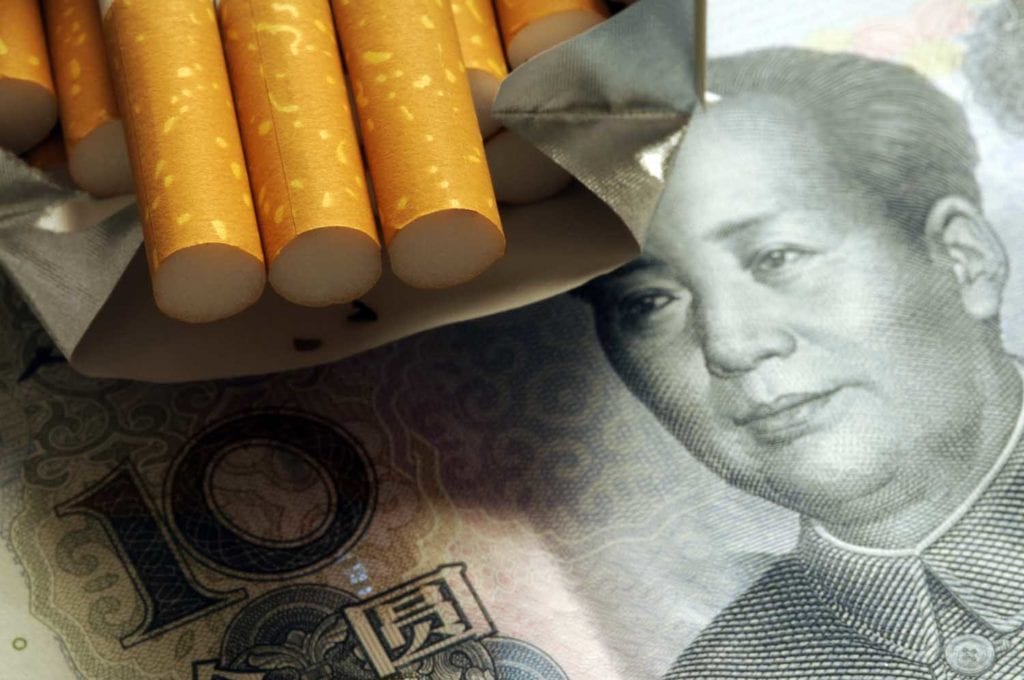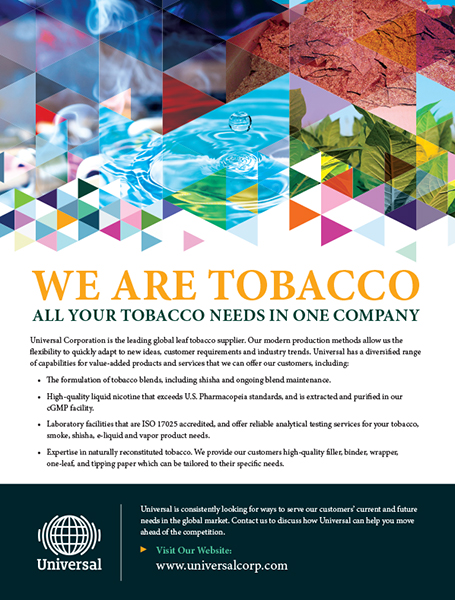
How tobacco rules would change China’s vapor business
TR Staff Report
On March 22, 2021, China’s Ministry of Industry and Information Technology published a draft of regulations that would subject vapor products to tobacco rules. The news caused share prices of leading Chinese e-cigarette companies, such as RLX Technology and Smoore International, to plunge from the stratospheric heights they had reached prior to the announcement.
The prospect of operating under the umbrella of China’s State Tobacco Monopoly (STMA) has clearly frightened investors, but what exactly would it mean for the vapor business to be governed by China’s tobacco rules? Bullet Finance, a Chinese-language business publication, recently interviewed Miao Wei (not his real name), a former officer in charge of raw materials at the China National Tobacco Corp (CNTC) who now heads an e-cigarette company.
With some 350 million smokers, China is the world’s largest tobacco market and the world’s largest potential market for vapor products. In a prospectus accompanying its initial public offer in January on the New York Stock Exchange, RLX Technology reckoned that vaping products have a penetration rate of only 1.2 percent in China compared with 32.4 percent in the U.S. Those numbers suggest considerable opportunity for growth. If Chinese smokers embrace e-cigarettes in meaningful numbers, the vapor business should thrive.
The tobacco business is a formidable source of income for the state, however. In 2018, it contributed an estimated 5.45 percent of the country’s tax revenue. The government is unlikely to sit by idly as its cash cow deflates. While officials cited health as a reason to regulate vapor products like tobacco, the desire to sustain revenue is likely to be an equally strong motivation.

Understanding the System
To appreciate the potential impact of tobacco-style regulations, vapor executives must understand how the Chinese tobacco industry works, Miao told Bullet Finance. Unlike the vapor business, which comprises numerous private companies competing for business, China’s tobacco sector relies on central planning and coordination. Individual manufacturers have little autonomy under this system.
From the cultivation of leaf tobacco to the retail sale of finished product, China’s state monopoly guides all tobacco companies’ actions. Prior to the tobacco growing season, the CNTC determines planting areas, establishes production targets and specifies the desired leaf grades. Once the crop has been grown, the CNTC purchases tobacco at set prices. Likewise, the CNTC is heavily involved in the development, selection and procurement of raw materials, such as filters, paper and packaging.
Significantly, sales and manufacturing functions are split between different entities under China’s tobacco monopoly. Cigarette manufacturers merely fulfill production targets set by the CNTC, which then purchases the products at set prices. The CNTC handles sales to retailers, who must be licensed by the monopoly to carry cigarettes. The CNTC determines how many cigarettes they receive, how much inventory they may carry and at what prices they should sell, which means the monopoly also specifies the retailer’s profit margin.

(Photo: Taco Tuinstra)
Current Rules
Unlikely the tobacco industry, the vapor sector has historically been lightly regulated in China, perhaps because of the business’ relative youth and small size. Most hardware and e-liquids produced there are exported. The Shenzhen region supplies more than 90 percent of the world’s vapor products, and China has presumably been happy with the positive trade balance.
Vaping products in China are not considered tobacco products like they are in Europe and the United States. Instead, e-cigarettes are treated as consumer goods. In the absence of heavy restrictions, the vapor sector has boomed. After the invention of the modern e-cigarette by a Chinese pharmacist, the country has spawned some of the world’s most valuable vapor companies.
Like RLX Technology, most Chinese vapor companies are light on assets. They design products, register trademarks and handle sales. Production and raw materials procurement are typically outsourced to foundry factories, such as Smoore International. This keeps assets low and minimizes investments. Vertically integrated companies that handle all aspects of the vapor business, such as Boulder International, are rare in China, according to the Bullet Finance article.
While many of these firms manufacture for export, an increasing number is keen to serve the budding domestic vapor market. In November 2019, however, the Chinese government prohibited the online sales of vapor products, citing concern about youth initiation. Remarkably, the vapor business continued to flourish in the wake of the crackdown, with companies boosting online sales to foreign customers and shifting domestic sales to brick-and-mortar stores. In January 2020, RLX Technology pledged to invest more than cny500 million ($77.35 million) over the three years to open 10,000 outlets in China. Boulder International opened more new Chinese vape stores in the first quarter of 2021 than it did in all of 2020, according to Bullet Finance, raising its store count above 2,000.

(Photo: Smoore International)
Potential Implications for E-cigarettes
Integrating e-cigarettes into the tobacco regulatory framework would change China’s vapor industry beyond recognition, according to Miao. The CTNC would designate and closely monitor suppliers of raw materials such as nicotine liquids, salt and heating coils. This would standardize vapor companies’ procurement procedures of raw materials.
Because the CNTC handles tobacco research and development, it would likely do the same for vapor products. Instead of multiple private players competing to produce technical breakthroughs, product development would depend on the efforts of a single state-run entity.
A separation of production and marketing functions would force vapor companies to choose what part of the business to specialize in—product design, R&D or manufacturing, for example. The most lucrative part—sales—would be off-limits, however, as that area is reserved for the CNTC under the monopoly system. Many companies would be relegated to contract manufacturers, a big change for some of the leading e-cigarettes firms whose business has been built on heavy marketing and few assets. A company like Smoore, however, would already meet the definition of “manufacturer” under the cigarette monopoly system, according to Miao.

In managing the vapor business, the CNTC would also be considering its role as a generator of tax income. Decisions about e-cigarette volumes and pricing would in part be determined by how these variables affect the targeted government revenue. That means it will be difficult to predict the volume and value of e-cigarettes each year and whether the price of vapor products will be higher or lower than that of cigarettes.
With CNTC setting profit rates, vapor companies are unlikely to achieve the dizzying margins that they recorded as private entities—a prospect that explains the steep drop in vapor stocks following the Ministry of Industry and Information Technology’s March 22 announcement.
The draft legislation reportedly faces strong opposition not only from the vapor business but also from public health advocates. The Beijing Tobacco Control Association noted that the STMA has historically failed to protect people against the risks of smoking, saying that the monopoly was “essentially performing the corporate functions of a tobacco corporation.”
Some see positives in stronger industry oversight, however. According to analyst Xiao Yue, who was also quoted by Bullet Finance, the rules could help tackle the problem of false advertisements in the sector and better protect the rights of consumers.
The comment period ended April 22. China’s State Council has not indicated when it will decide on the proposed legislation.
With thanks to Amei Zhang, China analyst at TMA











